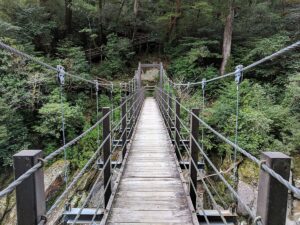Overview (history, characteristics, attractions)
Kasama Inari Shrine is one of the most representative Inari shrines in Kasama City, Ibaraki Prefecture, and has long been a place of worship for the local community. The main deity is the Inari god Ukanomitama-no-Kami, and many worshippers come to pray for prosperous business, bountiful harvests, and safety in their homes. The shrine grounds are home to numerous stone fox statues, torii gates, and historic shrine buildings, and together with the atmosphere of the approach and temple town, it is a spot where you can feel the "good old days of Japan." Kasama is also known for its pottery (Kasama ware), so you can enjoy pottery and local cuisine in addition to visiting the shrine.
Highlights
- Main hall and worship hall: A historic shrine building that is the center of worship. It is crowded with many worshippers during seasons and festivals.
- Fox statues: Statues of foxes with various expressions and poses are scattered throughout the temple grounds. They are a highlight that symbolizes the faith in Inari.
- Approach to the shrine and temple town: This traditional temple street is lined with souvenir shops and restaurants, making it a fun area to stroll around.
- Ema and fortune-telling slips: Visitors can be seen entrusting their wishes, such as business prosperity or finding love, to the shrine.
- Seasonal scenery: Enjoy the different scenery of each season, such as cherry blossoms in spring and autumn leaves.
- Nearby pottery-related facilities: Kasama ware kilns and galleries are nearby, and you can experience pottery making and shop.
Access (nearest station, transportation, etc.)
- Nearest station: JR Mito Line, Kasama Station, about 15-20 minutes on foot (about 5 minutes by taxi).
- Alternative route: Approximately 10 minutes by bus or taxi from Tomobe Station on the JR Joban Line. Tomobe is a stop on the Joban Line, making it convenient for transfers from the Tokyo area.
- By car: Approximately 15 minutes from Tomobe IC on the Kita-Kanto Expressway (the parking lot may be full during peak hours).
- Bus: Special buses and tourist shuttles may operate depending on the season and time of day. Please check the timetable before setting off.
Estimated stay (estimated time required)
- Short visit: 30 to 60 minutes (visit the main shrine, stroll around the grounds, purchase amulets)
- A leisurely stroll: 1.5 to 2 hours (including strolling around the temple town, lunch, and visiting souvenir shops)
- If you include sightseeing in the surrounding area: Half a day to a full day (including a visit to a Kasama pottery kiln and Kasama Art Park)
Nearby spots
- Kasama ware pottery and gallery: You can purchase pottery works and try your hand at making them. Perfect for souvenirs.
- Kasama Art Forest Park: Enjoy outdoor sculptures, an art museum, and a spacious park.
- Monzen-dori (shopping street around the approach to the shrine): A convenient spot for strolling and sampling local delicacies, with souvenir shops and restaurants.
- Pottery Festival (Himatsuri) and various events: Large-scale pottery markets and events are held during Golden Week and other times (dates change every year, so please check).
Things to be aware of (crowds, manners, seasonal precautions, etc.)
- Crowds: The shrine gets extremely crowded during events such as New Year's Day (from New Year's Day to early January), the annual festival, and the Toen Festival. If you want to avoid the crowds, it's best to visit on a weekday or early in the morning.
- Praying Manners: Please purify your hands and mouth at the temizuya (purification fountain), and observe the proper etiquette of two bows, two claps, and one bow before praying. Please refrain from taking photos in areas where photography is prohibited.
- Eating, Drinking, and Garbage: Please follow the rules for eating, drinking, and smoking within the temple grounds. Please take your garbage home with you or dispose of it in designated areas.
- Steps and stairs: There are stone steps and uneven terrain within the temple grounds, so we recommend wearing comfortable walking shoes. For those using wheelchairs or strollers, there are many steps in some areas, so please check the approach route in advance.
- Seasonal notes: Take precautions against the heat in summer and against the cold in winter. Tourists increase during the cherry blossom viewing season in spring and the autumn foliage season.
- Local customs and events: During festivals, please be considerate and do not interfere with the religious ceremonies, and follow the instructions of those involved.
―――
You can use it as is by pasting it into the "Custom HTML" or "Paragraph" block in WordPress (Gutenberg). If necessary, we can also create the insertion position of the photo, caption, and short introduction (excerpt) for social media, so please let us know.


